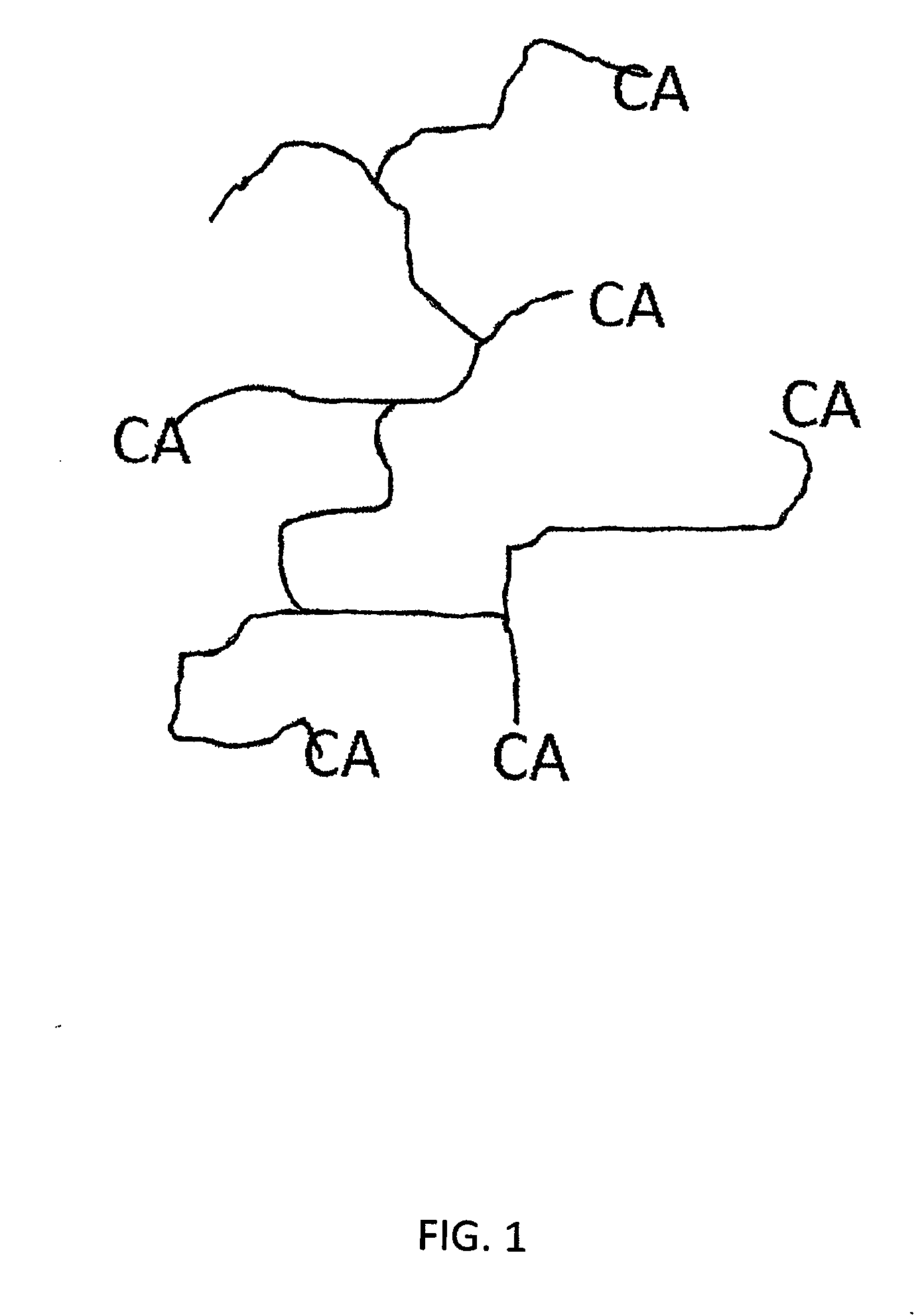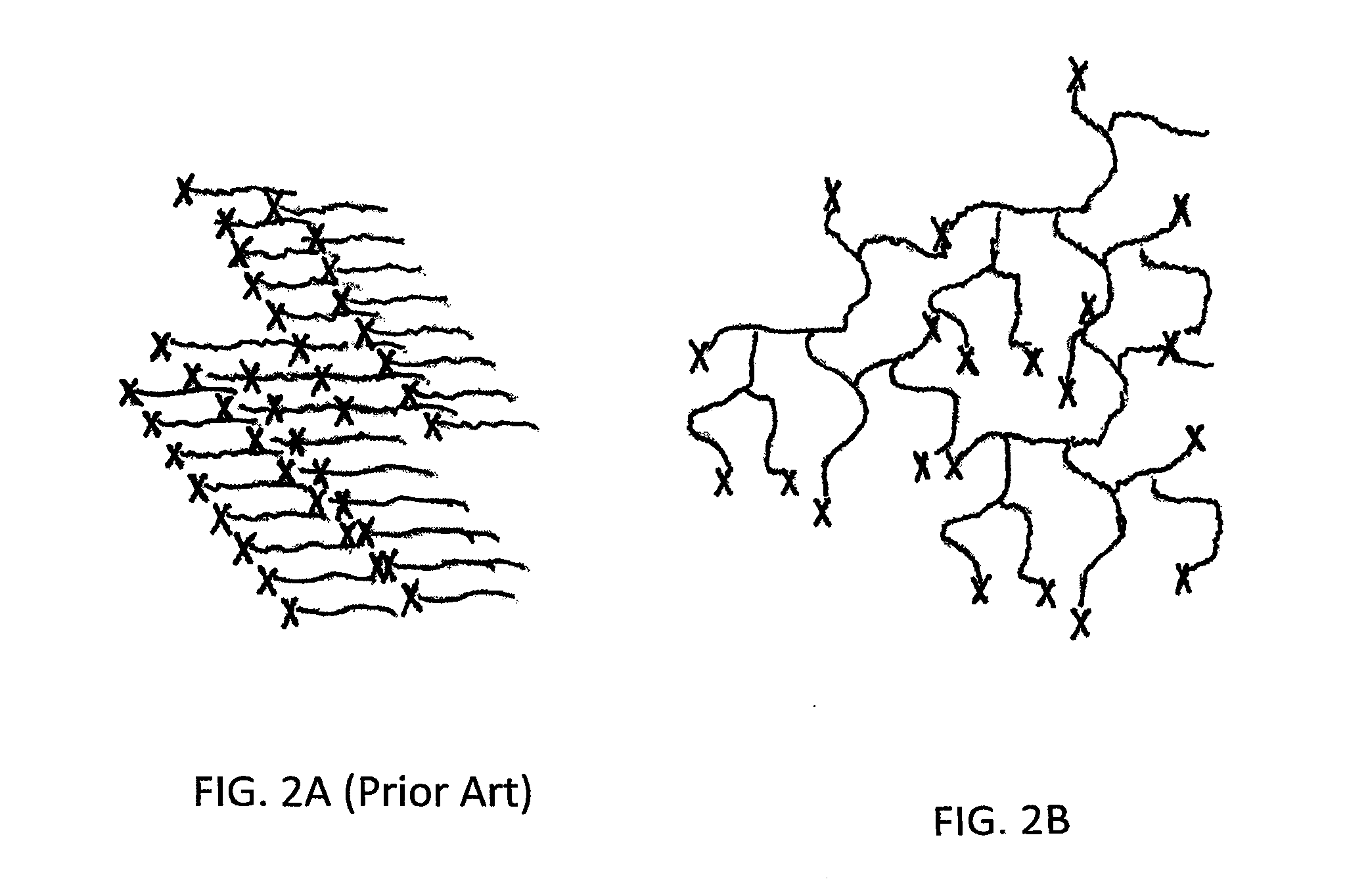Wound protecting polymers
a polymer and polymer technology, applied in the field of wound protection compositions, can solve the problems of inability to use for most medical applications, decrease the toxicity of cyanoacrylates, and toxicity of lower alkyl cyanoacrylates, and achieve the effect of being ready to apply
- Summary
- Abstract
- Description
- Claims
- Application Information
AI Technical Summary
Benefits of technology
Problems solved by technology
Method used
Image
Examples
Embodiment Construction
[0023]As noted hereinabove, the present invention seeks to provide a novel wound protecting composition formed from an end-functionalized arborescent polymer. The end-functionalized arborescent polymer has at least two branching points to provide at least four ends to the polymer. In one embodiment, the arborescent polymer may have at least three branching points to provide at least 6 ends to the polymer. In other embodiments, the arborescent polymer may have at least 4, at least 5, at least 6, at least 10, or at least 15 branching points to provide a coordinated number of ends of the polymer. That is, a polymer with 4 branching points may have as few as 4 ends or as many as 8 ends. Similarly, a polymer having 5 branching points will have as few as 5 ends or a many as ten ends. Thus, it should be evident how many ends will be provided with any suggested number of branching points.
[0024]The arborescent polymer contains a polyisobutylene (“PIB”) moiety, and in one embodiment, may have...
PUM
| Property | Measurement | Unit |
|---|---|---|
| glass transition temperature | aaaaa | aaaaa |
| glass transition temperature | aaaaa | aaaaa |
| glass transition temperature | aaaaa | aaaaa |
Abstract
Description
Claims
Application Information
 Login to View More
Login to View More - R&D
- Intellectual Property
- Life Sciences
- Materials
- Tech Scout
- Unparalleled Data Quality
- Higher Quality Content
- 60% Fewer Hallucinations
Browse by: Latest US Patents, China's latest patents, Technical Efficacy Thesaurus, Application Domain, Technology Topic, Popular Technical Reports.
© 2025 PatSnap. All rights reserved.Legal|Privacy policy|Modern Slavery Act Transparency Statement|Sitemap|About US| Contact US: help@patsnap.com


